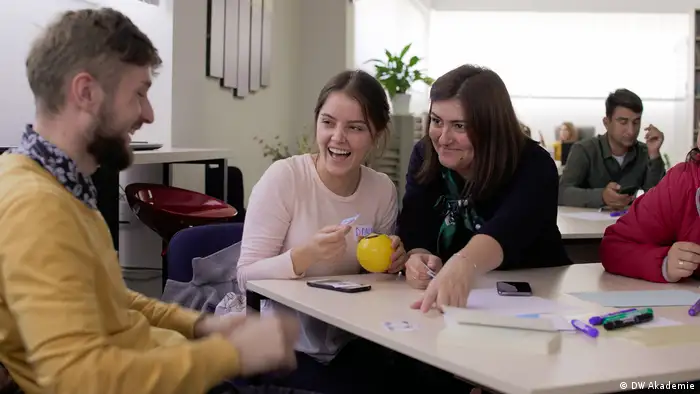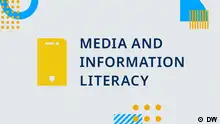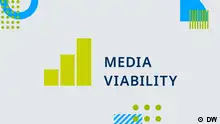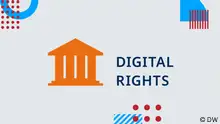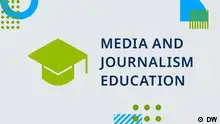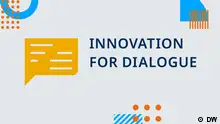MIL
'Zooming in on Media and Information Literacy': A new study helps identify MIL needs
A new study by DW Akademie has identified five unique MIL personae in Moldova, Jordan and Uganda. Moldovan Country Coordinator Olena Ponomarenko looks at how the study can help to identify the needs for MIL in Moldova.
Moldova is one of the most vulnerable countries in terms of disinformation resilience in Central and Eastern Europe. The Moldovan media market is highly politicized and influenced by two large political parties. Foreign – foremost Russian – propaganda is spread widely across TV and social media, in particular.
While social media is a popular platform for personal communication for many Moldovans working abroad, young people also use social media to access the news on a daily basis. However, without a critical approach to the tide of information available, they can be easily misled and become exposed to a multitude of digital pitfalls, such as fabricated content, hate speech and cyberbullying.
While social orphans (children and adolescents whose parents emigrated abroad for a job) make up nearly 25% of children in Moldova, neither schools nor social environments prepare them for the digital risks they may face or teach them how to benefit from the digital environment.
Read more: Zooming in on Media and Information Literacy: A survey-based typology of young media users
Identifying the MIL personae in Moldova
In order to give children and adolescents access to Media and Information Literacy (MIL), DW Akademie’s project partner Centrul pentru Jurnalism Independent trained school teachers in order to enable them to effectively teach MIL as an optional course in Moldovan schools.
IJC has already worked with 270 school teachers who chose to be multipliers of MIL. Building on the study of DW Akademie, Zooming in on Media and Information Literacy, IJC identified the following MIL profiles among their target groups: Digital Literacy Veterans — relatively young teachers who possess a range of digital skills and even use digital tools in class, and News Literacy Veterans — teachers who are aware of the MIL fundamentals, such as the negative impact of censorship and the watchdog function of media in a society.
News Literacy Veterans use both traditional and new media, but at the same time, they do not have sufficient knowledge or skills to check the sources of information and often perceive information on social media in particular as reliable. In addition, they do not have well-developed critical thinking skills and have difficulties in formulating questions concerning MIL.
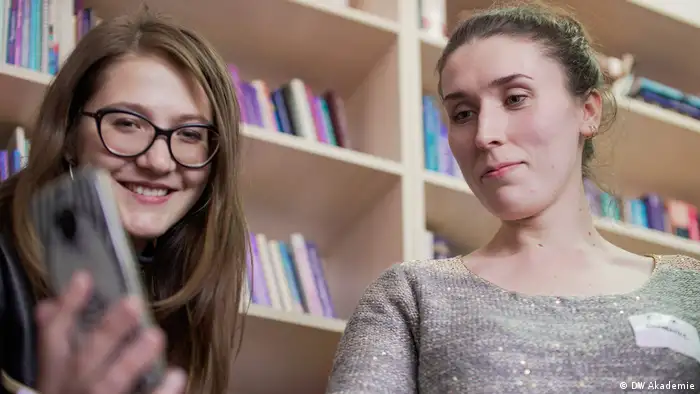
The five personae identified in the study will help Centrul Media pentru Tineri to identify peer trainers.
'We adapt our training programs'
Another DW Akademie partner, youth media organization Centrul Media pentru Tineri (CMT), promotes MIL among young people aged between 15 and 22 years in the field of non-formal education. Among CMT’s beneficiaries, all five profiles identified in the study appear to some extent. But the profiles of MIL Novice and MIL Intermediate dominate. Consequently, CMT MIL-trainings were developed mainly for their needs.
"There are also situations when a group of young people have a better knowledge in news or digital literacy — most of them come from urban areas and are more advanced," explained Veronica Boboc, the director of CMT.
"In this case, we adapt our training programs: either we focus on more specific topics with more details, exercises or develop digital skills to create media content of various formats (such as photo, video, storytelling)," Boboc added.
Through the engagement of young people in the production of youth media content, CMT increases not only their MIL skills but also provides the young people with a valuable opportunity to produce media content and raise their voices about problems they face in their schools or communities.
Peer-to-peer learning
"With some guidance, we will be able to understand more deeply the level of news and digital literacy and consequently adapt out MIL-training to all five profiles," Boboc said. In addition to this, CMT can use the clear profile segmentation when planning a series of media reports dealing with MIL. The segmentation into five profiles with different digital and news literacy skills allows the youth media organization to address the needs of young people more effectively and mainstream MIL learning among groups ranging from MIL Novice to MIL Veterans.
Finally, the findings of the study confirm the plans of DW Akademie for its next phase in Moldova, to follow a peer-to-peer -approach involving MIL-Veterans. Young people who will be identified as MIL Veterans and those who become MIL Veterans through the training programs by CMT will conduct various MIL activities for their classmates and peers in order to develop a more critical attitude to media consumption and promote MIL as an optional course in school.
Olena Ponomarenko is DW Akademie's country coordinator for Moldova.
- Date 30.10.2019
- Author Olena Ponomarenko
- Feedback: Send us your feedback.
- Print Print this page
- Permalink https://p.dw.com/p/3SCuo
- Date 30.10.2019
- Author Olena Ponomarenko
- Send us your feedback.
- Print Print this page
- Permalink https://p.dw.com/p/3SCuo

